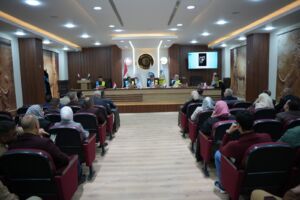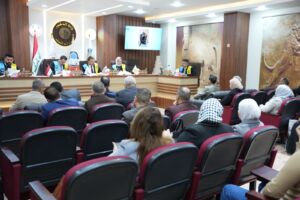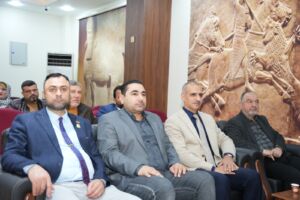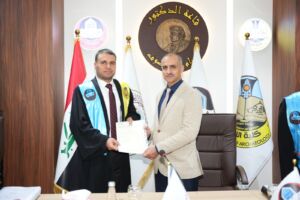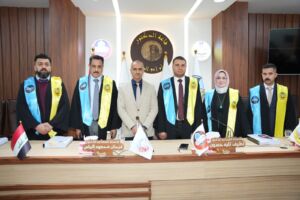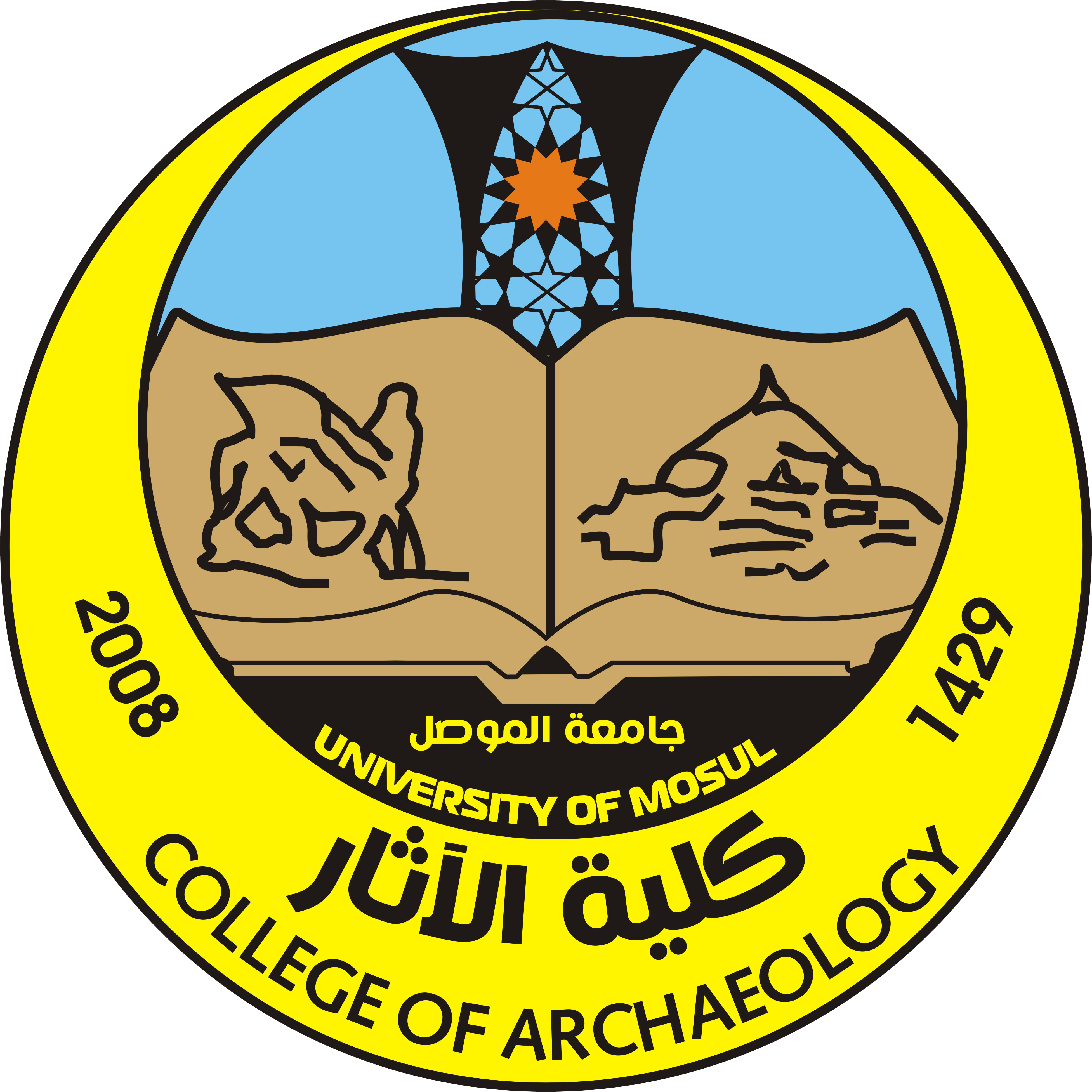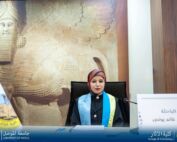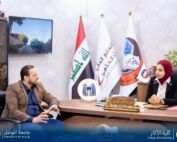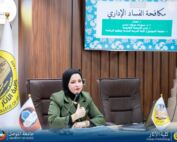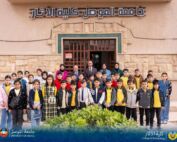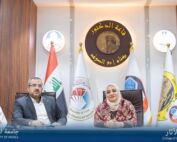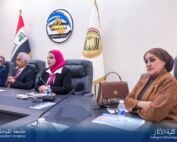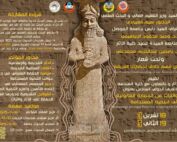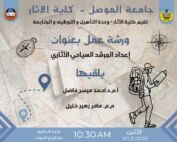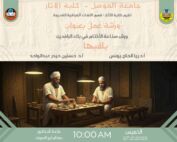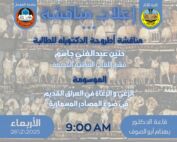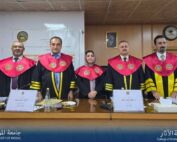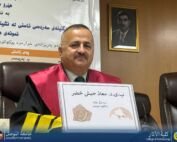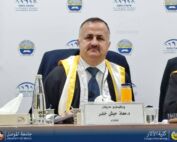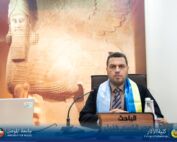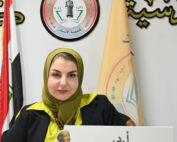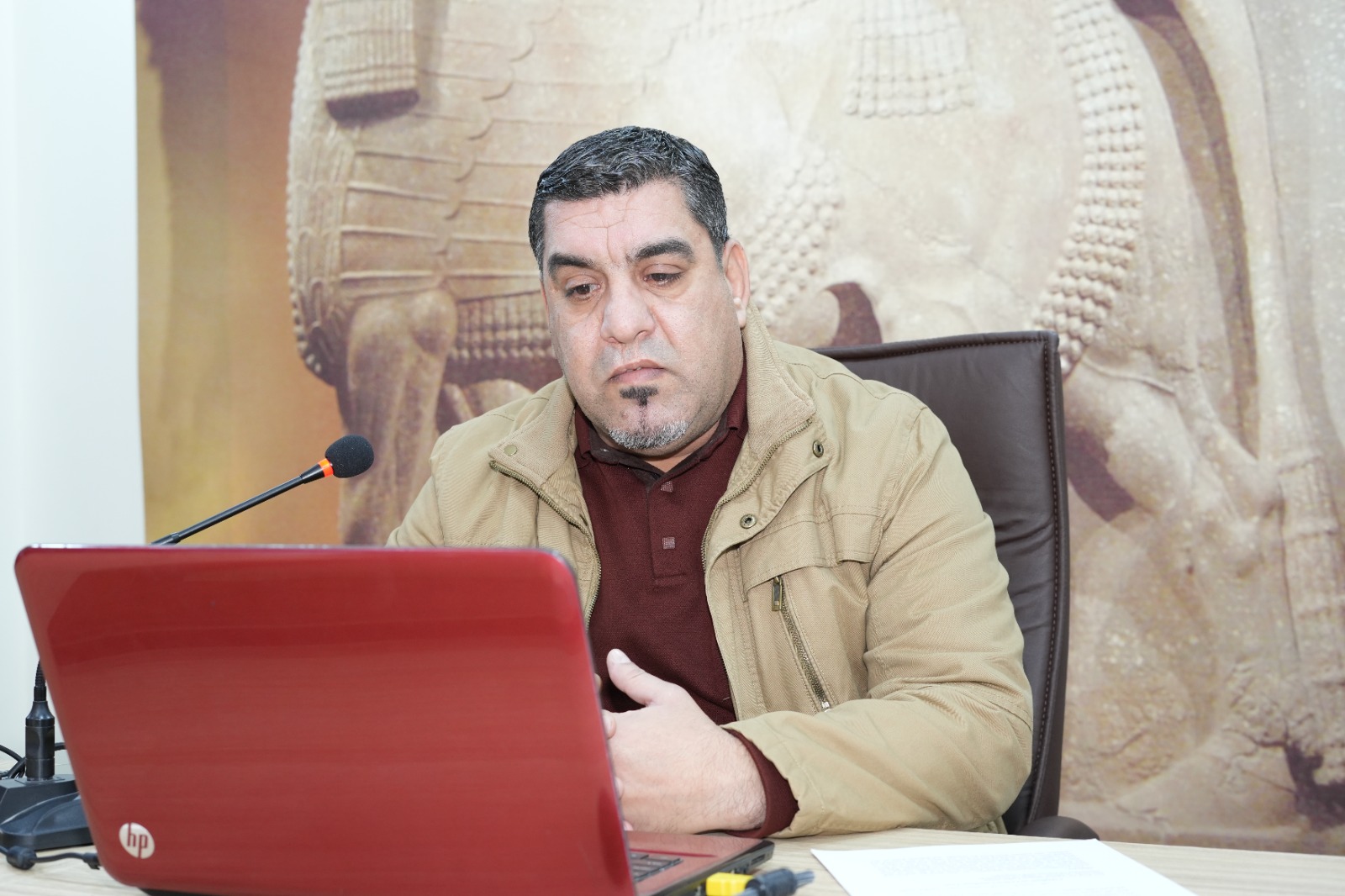22 February، 2024
Master’s thesis at the College of Archaeology entitled (Characteristics of the basements of the buildings of the city of Mosul during the Ottoman era – an applied study of selected samples)
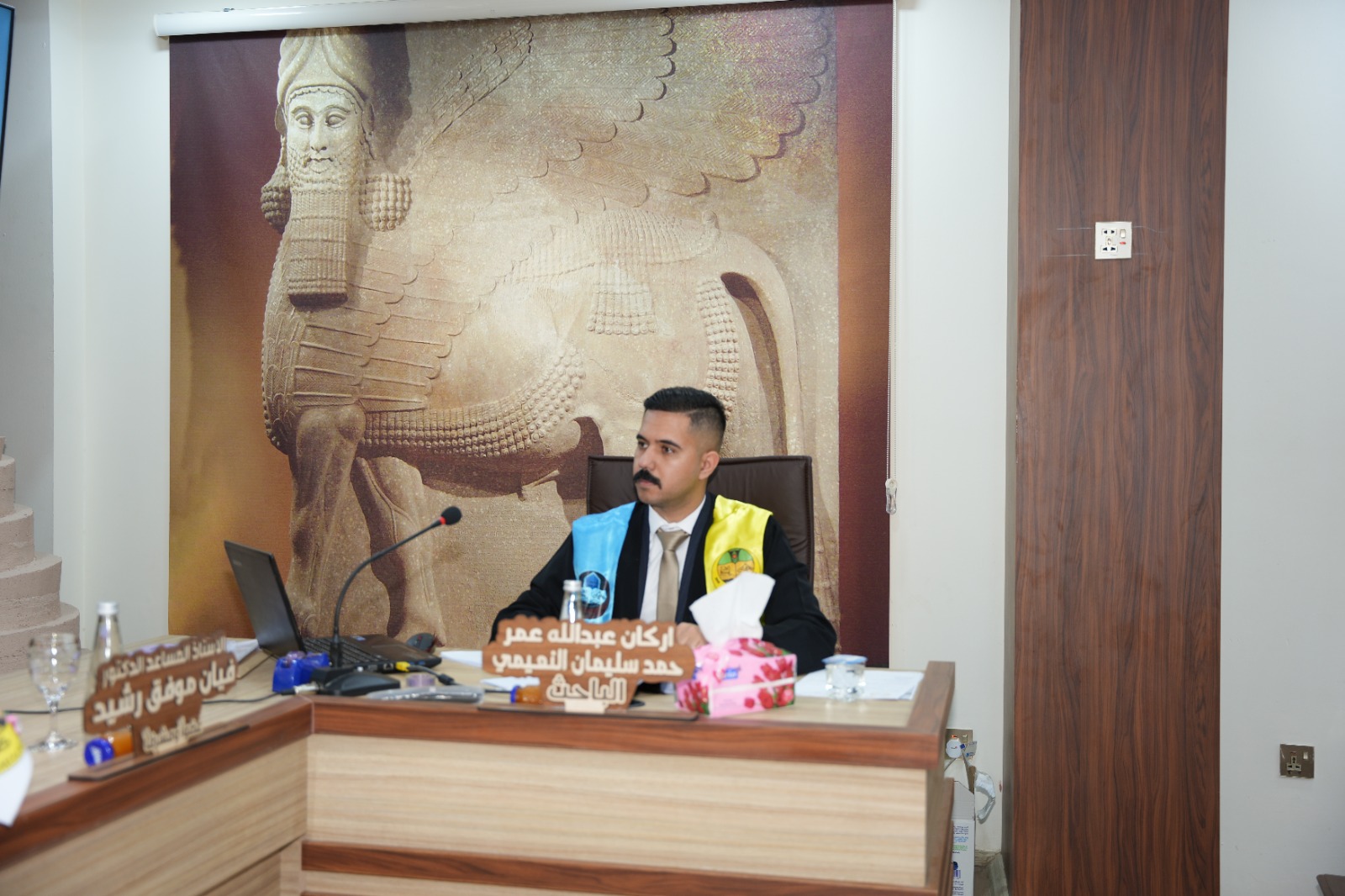
The Department of Archeology at the College of Archeology/ University of Mosul discussed the master’s thesis entitled (Characteristics of the basements of the buildings of the city of Mosul during the Ottoman era – an applied study of selected samples) on Wednesday, February 21, 2024, in the hall of Dr. Behnam Abu Al-Sof in the college. Part of the viva was attended by Professor Dr. Thaer Ahmed Al-Samman, Dean of the College of Administration and Economics, Assistant Professor Dr. Yasser Jaber Khalil, Assistant Dean of the College of Archeology for Scientific Affairs, Assistant Lecturer Khalis Abdul Karim Farman, Assistant Dean for Administrative Affairs, and a number of college staff.
The thesis submitted by the student (Arkan Abdullah Omar) dealt with the basements of the buildings of the city of Mosul during the Ottoman era, describing the basement as an important planning element that has proven its success throughout the ages and architecture has implemented it in its plans since the pre-Islamic eras and continued into the Islamic eras ending with the Ottoman era. The city of Mosul’s varying height and gradual slope, the nature of the land, and the fluctuating climatic conditions led to the appearance of this element in most of the buildings in the city of Mosul, with multiple functions and uses, and a difference in layout from one building to another. The study addressed the climatic and structural treatments for this type of building, including several types of buildings, including religious, educational, residential, and service buildings, dating back to the Ottoman era in the city of Mosul.
The thesis aims to try to identify the layout of the basements in the various buildings of the old city of Mosul, relying on the field study to survey the selected samples in the neighborhoods of the old city of Mosul, documenting and photographing them, drawing their engineering plans, studying their architectural and artistic elements, studying the functions of the basements, the diversity of their plans, uses and building materials, and what Mosul architecture has achieved with building materials. At that time, they differed in terms of planning and function, and the buildings sometimes contained more than one basement. The viva committee was headed by Assistant Professor Dr. Farhan Mahmoud Elias, and the membership of Assistant Professor Dr. Latif Tayeh Hassoun from Al-Qadisiyah University/College of Archeology/Department of Archaeology, and the lecturer Dr. Muhammad Muayyad Malallah, under the supervision and membership of Assistant Professor Dr. Fian Muwaffaq Rasheed.
